US-Bangla plane crash: What caused it?
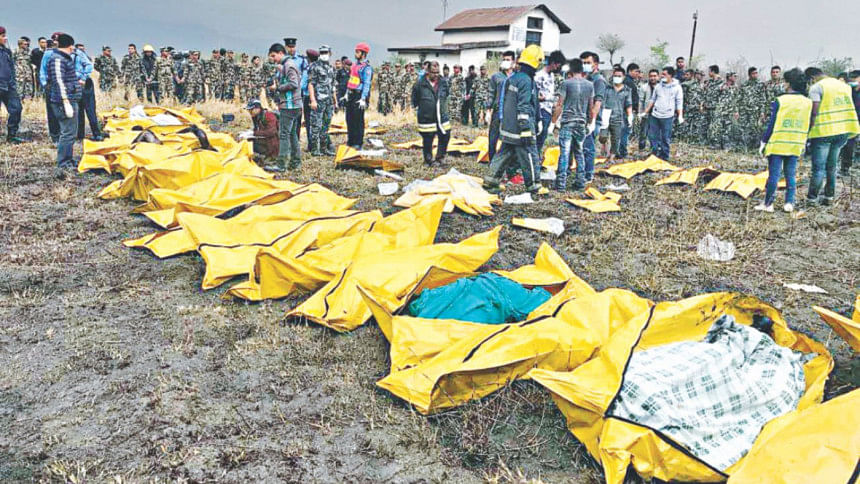
Did faulty communication or technical malfunction cause the crash of Flight Bangla Star 211 at Kathmandu's Tribhuvan International Airport (TIA)? On Monday 49 people died when a US-Bangla Airlines plane carrying 71 passengers and crew crashed on "abnormal" landing at TIA.
However according to The Daily Star the death toll rose upto 51 till this morning. The exact cause of the crash remains unclear. The authorities have started investigation. The initial reports—video and audio recordings—indicate the 78-seater US-Bangla Airlines Bombardier Dash 8 Q400 aircraft had sustained a technical issue.
Passengers who survived the crash said sustained shuddering few minutes before the crash followed a loud bang. Ashish Ranjit, a travel agency operator in Balaju, recuperating at Norvic International Hospital, Thapathali, said, "Before the incident, I could sense the danger, the plane was wobbling horribly. I was scared and called an air-hostess. She raised her thumb indicating everything is ok," he said.What caused the plane to wobble?
"It's normal during this time of year (February-April) that strong winds and turbulence try to blow the plane," said Tri Ratna Manandhar, former director general of the Civil Aviation Authority of Nepal, who has vast experience as an air traffic controller. In March, an international aircraft tried twice to land at the TIA, but failed due to the crosswind.
The case of Flight 211 seems different as per the audio conversation. "The weather, especially the wind is normal. The captain is cool and calm while communicating with the ATCs."
"It's a mystery why the aircraft made a sharp right turn from north-west to east over the ATC tower," he said. "It's abnormal." Obviously, it is difficult to land at the TIA given its vast terrain, but pilots who fly in Kathmandu are "specially trained".
They have to do separate simulator training for Kathmandu's airport landing. The US-Bangla Airlines Captain Abid Sultan, a former pilot of the Bangladesh Air Force, had landed more than 100 times at Kathmandu. Sultan had more than 5,000 hours of flying experience.
"Based on his experience, we cannot immediately judge that the captain was disoriented," said a Nepali pilot, who flies in the domestic route. Captain Pawandeep Singh, a pilot with Indian airlines, told the BBC that the recording showed that there was confusion in the cockpit. "I am not sure what specifically happened in this case, but it seems like there was miscommunication while the pilot was trying to land the plane. We will know the complete truth only when investigators file their report," the BBC reported, quoting the Indian pilot.
Manandhar argues the ATC had cleared the runway on both sides for Flight 211 to land when the aircraft was at the north side of the runway. The radio conversation tells the flight was permitted to land from the runway 02 (Koteshwor side), but it abruptly broke the path and proceeded towards north-a surprise for the ATC.
So did the aircraft sustain a technical issue? The issue cannot be ruled out given the abnormal behaviour of the Flight 211.
On Tuesday, a local news portal shikharnews.com posted a video of the flight US-Bangla Airlines that shows that the aircraft was flying very low at Gagalphedi- the North-East of Kathmandu. The video shows it nearly crashed at a foothill of a hill. The aircraft, however, managed to lift with white light visible from the wing tip that illuminate the terrain. Locals are heard chatting: The aircraft has lost its way. It is flying. It is flying.
At this point, in the audio conversation, Nepali pilots on the ground are heard warning the ATC that the Flight 211 pilot seems disoriented and that he should be assisted by radar vectoring, as the visibility in the hills is bad.
Experts said that aircraft never crash because of one single issue. It is almost always a combination of factors. The mechanical breakdown on its own should not have meant the plane crashed, but could have been handled correctly by the pilots.
Therefore, statistics for the causes of aircraft crashes are not always clear.
The following statistics are a reasonable representation: 55 percent pilot error, 17 percent aircraft mechanical error, 13 percent weather, 8 percent sabotage (lightning strikes) and 7 percent other like ATC and ground handling.
Bombardier Inc sends 2 officials
Bombardier Inc. has sent two officials to Nepal to assist Nepal government with the investigation of US-Bangla Airlines Bombardier Dash 8 Q400 aircraft.
An air safety senior investigator will act as an adviser and a field service representative will support the airline, said the company's spokeswoman Nathalie Siphengphet. Forty-nine people were killed on Monday when a US Bangla Airlines passenger plane carrying 71 people from Bangladesh crashed and burst into flames as it landed.
Meanwhile, Bangladeshi Civil Aviation and Tourism Minister AKM Shahjahan Kamal arrived Nepal to monitor personally the latest situation of the US-Bangla Airlines deadly crash on Tuesday. The minister is accompanied by member operation and flight safety director of Civil Aviation Authority of Bangladesh, Suresh Acharya, joint secretary of Nepal's Tourism Ministry said. "The officials from Bombardier and Bangladesh will assist Nepal's investigation commission," said Acharya.
According to Bombardier, the Q400 has sustained several landing gear incidents over the years but this is just the second crash of the aircraft resulting in death. All 49 people on board were killed on February 12, 2009 when a Colgan Air flight from Newark Liberty International Airport to Buffalo Niagara International Airport, stalled and crashed into a house while preparing to land at the airport.
Caan, CIB probe 'leaked' conversation
The Civil Aviation Authority of Nepal (Caan) and the Central Investigation Bureau (CIB) have launched an investigation into "leaked" radio conversation between the air traffic controller (ATC) and the pilot of crashed US-Bangla Airlines.
Sanjiv Gautam, director general of Caan, said on Tuesday that the conversation between the pilot and ATC holds security sensitiveness and thus it has been prohibited to be published. Gautam also said that the US-Bangla Airlines' allegation that the ATC in Kathmandu gave wrong direction was baseless.
"One must have fact to prove such allegations before making such remarks public," he said at a press meet. "An investigation panel has been formed to find out the turth," he said.
On Monday, US-Bangla Airlines Chief Executive Imran Asif had blamed Kathmandu air traffic control for the crash. "There were wrong directions from the tower. Our pilot was not at fault," the BBC had reported.
Copyright: The Kathmandu Post/ Asia News network

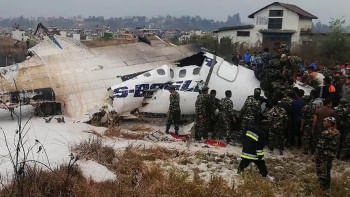
 For all latest news, follow The Daily Star's Google News channel.
For all latest news, follow The Daily Star's Google News channel. 

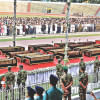
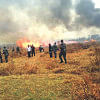
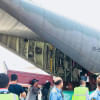
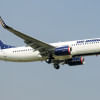



Comments